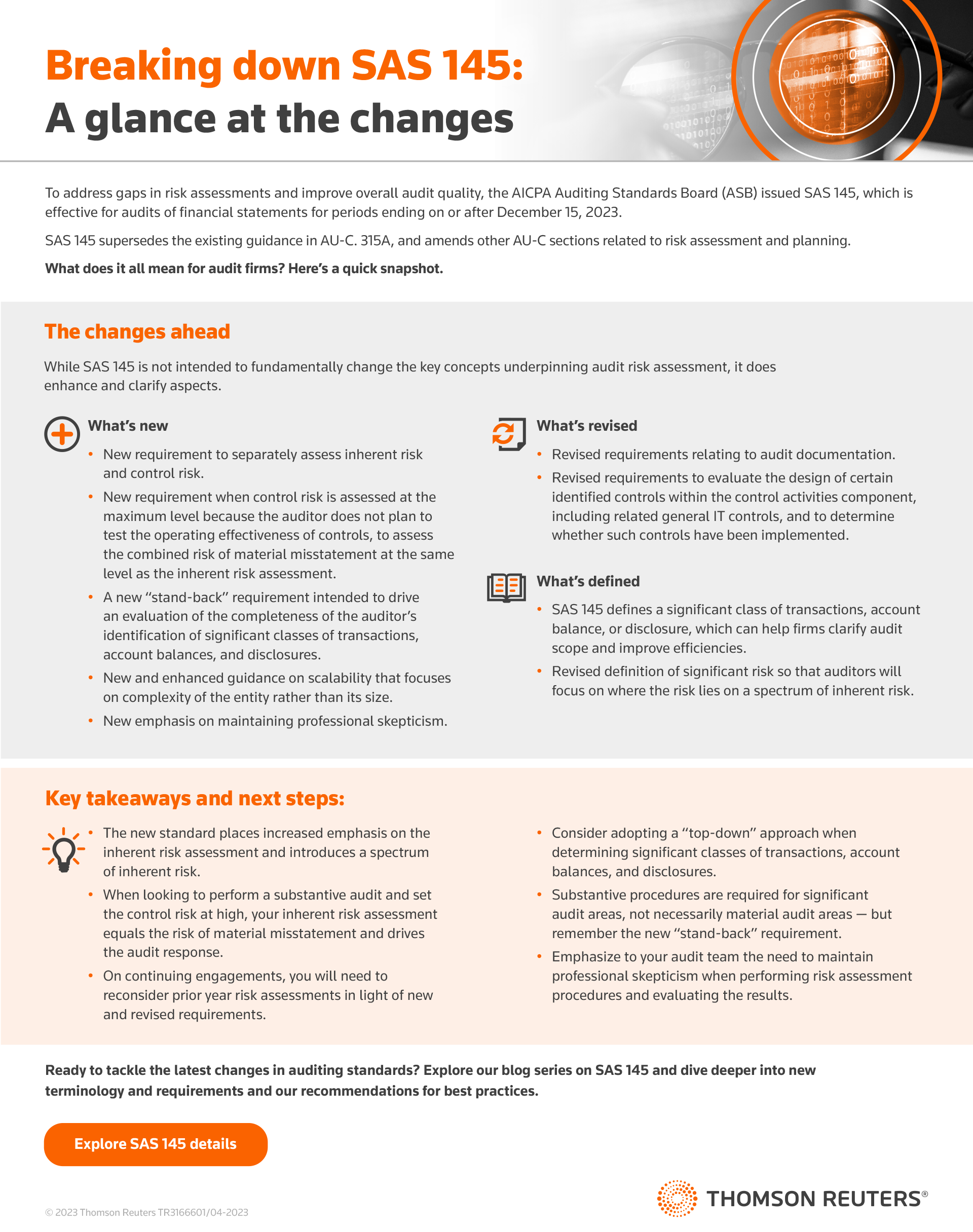In the ever-evolving world of auditing, the AICPA Auditing Standards Board (ASB) has introduced SAS 145, effective for audits of financial statements for periods ending on or after December 15, 2023. This new standard, which supersedes AU-C 315A and amends other AU-C sections, aims to bridge gaps in risk assessments and elevate audit quality.
SAS 145 maintains the core principles of audit risk assessment but introduces significant enhancements and clarifications. Key changes include separate assessments of inherent and control risks, a new “stand-back” requirement to ensure thorough identification of significant transactions and balances, and revised guidelines emphasizing professional skepticism. These modifications are designed not only to refine the process but also to adapt to the complexities of entities, focusing more on their nature rather than size.
As firms navigate these changes, understanding and integrating SAS 145’s requirements will be crucial for effective and efficient audits. Read the infographic to learn more about SAS 145 at a glance.
Download your copy of the infographic
Implementing SAS 145 and beyond
As the auditing landscape adjusts to the new mandates of SAS 145, audit firms are poised at the brink of significant procedural enhancements. This standard not only revises the approach to risk assessment but also emphasizes a more nuanced understanding of audit scopes and risks.
With the introduction of separate assessments for inherent and control risks and a new “stand-back” requirement, auditors are encouraged to delve deeper into their evaluations of significant transactions, account balances, and disclosures. The shift towards a spectrum-based view of inherent risk, coupled with revised definitions and requirements for audit documentation and control evaluations, underscores a move towards more dynamic and responsive auditing practices.
For firms, the transition to SAS 145 means rethinking old strategies and embracing a more detailed, skeptical approach in their audit processes. Embracing these changes will be crucial for enhancing audit quality and maintaining compliance with evolving standards.
To learn more, please visit our SAS 145 hub.







